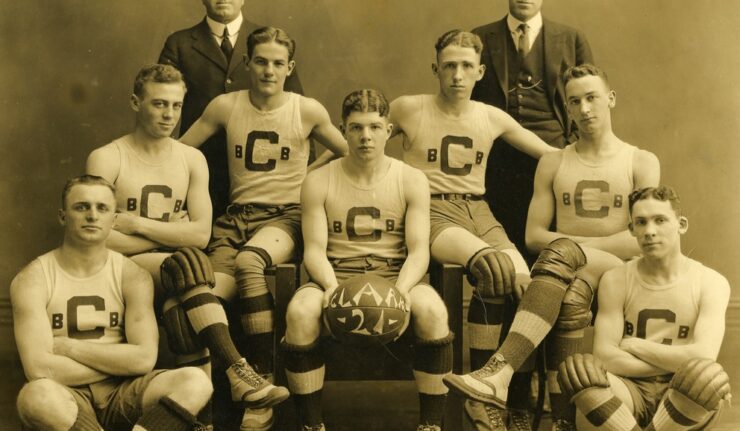Basketball, one of the world’s most beloved and widely played sports, was invented in the late 19th century. This detailed history will take you on a journey through the origins, key milestones, and the evolution of basketball from its humble beginnings to the global phenomenon it is today.
Dr. James Naismith
The credit for inventing basketball goes to Dr. James Naismith, a Canadian physical education instructor. In December 1891, while working at the International YMCA Training School in Springfield, Massachusetts, Naismith was tasked with creating a new indoor game to keep his students active during the winter months.
The First Game
Naismith’s initial concept involved placing peach baskets on opposite ends of a gymnasium, with the objective of throwing a soccer ball into the opposing team’s basket. On December 21, 1891, the first basketball game was played with two teams of nine players each, and the final score was 1-0. The rudimentary rules established the foundation for the sport.
Early Development and Spreading Popularity
As the game gained popularity, Naismith and other early enthusiasts made several rule modifications to refine the sport. For example, the introduction of the dribbling rule, allowing players to move with the ball, helped increase the pace and fluidity of the game.
Basketball’s growing popularity led to the formation of the first organized leagues. In 1893, the first women’s basketball game was played, and in 1898, the National Basketball League (NBL) was formed, marking the first professional basketball league in the United States.
Rise of College Basketball
In 1906, the Intercollegiate Athletic Association of the United States (IAAUS) was established, which later became the National Collegiate Athletic Association (NCAA). The NCAA played a significant role in the development and regulation of college basketball.
Throughout the early 20th century, several college basketball programs gained prominence. Schools like the University of Kansas, the University of Kentucky, and the University of North Carolina became powerhouses, attracting talented players and passionate fan bases.
Professional Basketball and Formation of the NBA
In 1946, the Basketball Association of America (BAA) was founded, merging with the National Basketball League (NBL) three years later to form the National Basketball Association (NBA). The NBA grew in popularity and became the premier professional basketball league in the world.
Basketball’s popularity began to transcend borders, with the sport spreading to various parts of the world. The formation of the International Basketball Federation (FIBA) in 1932 helped coordinate and regulate international competitions, including the Olympic Games, which added basketball as an official event in 1936.
Modernization
As the sport evolved, advancements in equipment and technology played a crucial role. The introduction of the nylon basketball net in the 1910s replaced the original peach baskets, and improvements in ball design and manufacturing enhanced gameplay.
Over the years, the rules of basketball continued to evolve. Notable innovations include the introduction of the shot clock in 1954, which added a time limit for shooting, and the implementation of the three-point line in the late 1970s, revolutionizing scoring strategies.
Global Popularity and Expansion
Basketball’s appeal continued to grow globally, with the formation of professional leagues in various countries and the emergence of international basketball stars. The Dream Team, composed of NBA players, dominating the 1992 Barcelona Olympics, further propelled the sport’s international popularity.
From Dr. James Naismith’s inventive idea in 1891 to the global phenomenon it is today, basketball has undergone a remarkable journey. Its humble beginnings in a Springfield gymnasium have evolved into a fast-paced, dynamic sport played and adored by millions around the world. The sport’s rich history, coupled with its constant innovation and international appeal, guarantees that basketball will continue to captivate fans for generations to come.


